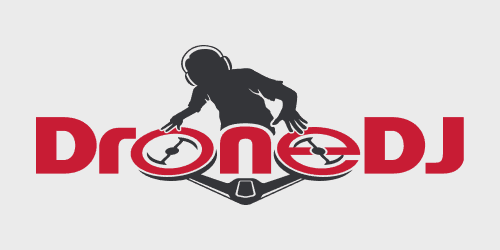
DJI just released an official statement on the report of a plane striking a drone in Quebec that we wrote about earlier today. Currently, it is not known (or at least not officially) what kind of drone and what brand exactly has collided with the commercial airliner. However with DJI being the largest drone manufacturer, chances are, it may have been one of their products. DJI states that they are ready to assist the Canadian aviation authorities. The collision took place at about 1500 feet of elevation and DJI’s drones are programmed by default to not exceed 4oo feet. In their release, DJI stresses that many people are using drones safely and responsibly and that DJI is pioneering new technologies such as geo-fencing and AeroScope to allow for safer sharing of the airspace.
DJI Statement On Report Of Plane Striking Drone In Quebec
October 16, 2017 – DJI, the world’s leader in civilian drones and aerial imaging technology, stands ready to assist Canadian aviation authorities as they investigate a report that a small passenger plane struck a drone while landing in Quebec City.
No details of the reported collision have been disclosed, and DJI is unaware whether any of its products may have been involved. DJI drones are programmed by default to fly no higher than 120 meters, and the Quebec City airport is restricted in DJI’s geofencing system.
Millions of drones are used safely and responsibly around the world for business, agriculture and enjoyment. DJI absolutely condemns any unsafe operation of drones, and urges all drone pilots to understand and obey the laws and regulations in their jurisdiction before launching their drones.
DJI has pioneered many key technological advances to help ensure that drones can safely share the skies with traditional aircraft, including GPS-based geofencing to help drone pilots steer clear of sensitive areas, automatic return-to-home features for drones that lose connection or have low battery strength, and sense-and-avoid systems to help steer clear of obstacles.
DJI supports the creation of a simple and reasonable system to register drones in Canada, coupled with a strong educational component so drone pilots can easily learn how to fly safely and responsibly. DJI discusses its safety approach for Canadian skies in comments delivered last week on Transport Canada’s draft drone regulations, which DJI believes are not aligned with international best practices for encouraging safe and responsible drone use. DJI’s comments may be downloaded at this link.
Canadian drone regulations differ from global best practices
DJI has also commented on the new Transport Canada drone regulations, which it believes are not in line with global best practices. DJI states that:
Unfortunately, the draft “Regulations Amending the Canadian Aviation Regulations (Unmanned Aircraft Systems)” are out of step with global trends in Unmanned Aircraft Systems (UAS) regulations, academic research, and on the ground realities. If implemented in their current form, they would create unnecessarily burdensome barriers to innovation, growth, and beneficial operations.
DJI brings forward some good points regarding the proposed Canadian regulations:
- The Canadian rules make no difference between recreational and commercial drone users. Recreational pilots should not be held to the higher standards that are commonly used for commercial drone pilots.
- Do not exempt from regulations members of the Canadian aeromodelling associations (MAAC) as it would potentially create an unfair situation for non-members.
- Transport Canada’s insurance requirements of $100,000 are too high for recreational drone pilots
- Transport Canada’s proposed regulations are not based on the latest scientific data and are therefore too restrictive. Two examples are: 1) the risk of bodily harm from a drone impact is much smaller than originally assumed and 2) the fly-away risk of drones is also much smaller than assumed by Transport Canada.
- Lastly, Transport Canada’s requirement to issue a Statement of Conformity of each individual UAS (Unmanned Aerial System or drone) sold is unrealistic and unnecessary.
DJI suggestions to Transport Canada
DJI suggests that Transport Canada’s regulations should have the following characteristics and that the Australian regulations that were implemented a year ago are a good place to start. According to DJI, an effective regulatory regime would have the following components:
- A distinction between recreational and commercial users, with only commercial users required to pass a test.
- No liability insurance requirement for recreational users.
- Weight categories based on the latest ASSURE research, including an increase in the maximum weight for the Very Small category to 2 kg and for the Micro category to 1 kg.
- Restrictions on flying near aerodromes that properly restrict UAS operations that would pose a threat to aircraft without unnecessarily banning a wide range of perfectly safe operations. This would include use in some locations of height restrictions to keep drones out of the flight path of aircraft rather than blanket bans. Operation of small drones at an altitude of 30 m several kilometers from an airport do not pose risks. Blanket bans on these operations create uncertainty and encourage non-compliance without protecting safety.
- A compliance regime (if one is deemed necessary) that is tailored to addressing a significantly increased risk that makes it simple for manufacturers to certify a UAS product line as compliant.
- Reasonable restrictions to protect people from injury, such as a requirement not to operate a drone over areas where the drone could hit someone if it fell, rather than bans on operating in urban areas (even if people are not present) or requirements to stay a great fixed distance from people.
- A method for identifying a drone that does not threaten the operator’s privacy, such as requiring users to label their drone with a registration number supplied by Transport Canada or something that could identify an owner to police such as a license plate number.
What do you think about the proposed regulations from Transport Canada? Let us know in the comments below.
FTC: We use income earning auto affiliate links. More.






Comments